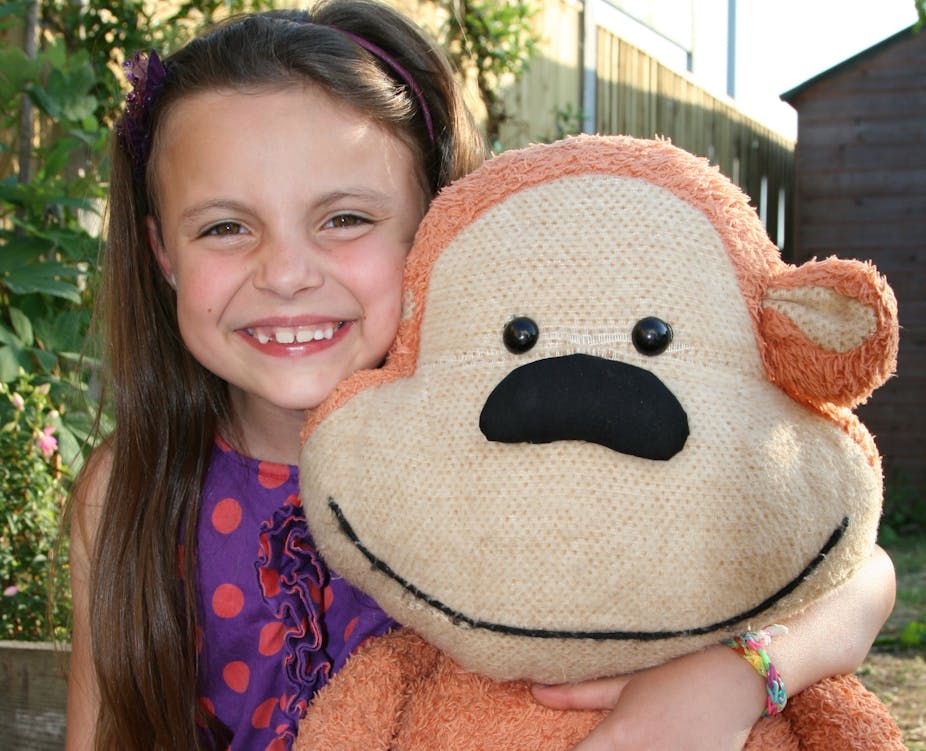Many professional authors are also parents, but recently, there have been a number of success stories of parents simply writing for their own children and becoming very successful. And this recent surge is largely driven by digital technology opening up the book market.
Hameeda Raj wrote a book to help her deaf son Amaan, mostly because she was frustrated with the lack of appropriate reading material for hard of hearing children. The book received fantastic reviews and extra print demand. And another mother, Helen Sadler, wrote a book called Monkey has an Operation for her daughter to prepare her for a lung surgery. Helen wanted to help her daughter with the daunting, yet inevitable, experience she was going to face. The book led to a sequel entitled Monkey has a Blood Test and has grown into a project with 60 health-related titles in the pipeline.
Of course parents have been making stories up for their children for years, but it is only recently that these stories, deriving from particular needs, are able to reach a wider audience. We could say that both mothers took advantage of a niche market gap. But they did more than that.
Parents can ensure that the books they write are not only aligned with their children’s unique personal worlds but also their particular needs and shared experiences. These do not have to be always big, health-related issues. It could be that your child badly wants a new toy you as a parent cannot financially afford. A story could be written about a boy (who happens to be your little boy) who reacts in a certain way (for example, not throwing a tantrum for not getting his toy). Your child is likely to listen more when they see a direct depiction of an alternative outcome.
Children are not going to be driven to books because a celebrity wrote it, but they will want to read a book mummy or daddy wrote for them. And if you worry about not having a special story in mind or the skills of Michael Morpurgo, let me assure that whatever you produce for your child, they will love it. I’ve seen stories which were, quite frankly, rather dull, but children absolutely loved them because of their personal nature.
Another great reason for parents to become book authors, initially for their own children, is to get greater diversity into children’s books. Many parents go the extra mile to look for books which would fit their context and appeal to their child. Parents are therefore very market-savvy about what is out there and what is missing. And so writing parents can play a vital role in the pressing need to have less gender bias in children’s books and more racial diversity.
If parents write for their children, they can make their children part of the story-making process, practising some vital literacy skills and learning together with and about each other. A collaborative story-making process is likely to be followed by a joint story-sharing which is an incredibly rewarding and positive experience for families. Rarely can professional authors experience this unique part of the story cycle.
Of course, writing a book takes time. However, with several children’s smartphone and tablet apps, self-publishing has become much quicker and more affordable than ever before.
Also, personalisation becomes even easier. Producing a story for your child in the digital medium means that you can easily include your own pictures, adding to the genuineness and topicality of the story. With multimodal story-making apps, you can add not only texts and pictures, but also sounds to accompany your stories, thus making them even more engaging and authentic. This format also allows you to update the stories periodically and flexibly, breaking away from the rigidity of the traditional printed format. While printed books are very much a fixed and finished product, the personal digital storybook can be periodically updated with new pictures or edited text.
So, the message is clear: if you create a book for your child and let your child create one for you, the experience will enrich the imagination and creative expression of both of you. And importantly, you will both help to diversify children’s literature and help sculpt the new landscape of children’s books.

